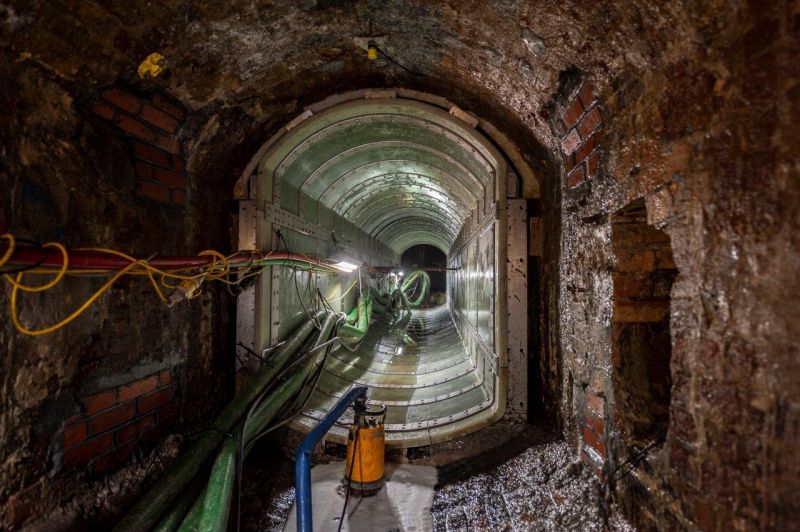£20 Million London Sewer Upgrade Wins Top Construction Award
Published on by Water Network Research, Official research team of The Water Network in Business
Thames Water has won a top engineering award for an innovative £20 million upgrade of a Victorian sewer in central London.

Image by Thames Water
The state-of-the-art King’s Scholars’ Pond project did not cause any delays on the roads above or tube below, while the 1850s tunnel also remained in full wastewater operation throughout.
The ‘keyhole engineering’ scheme, which was completed earlier this year, was awarded the title of Operations & Maintenance Project of the Year at the British Construction Industry Awards on October 9.
Asad Hanfi, Thames Water project manager, said: “This was one our most challenging sewer repairs ever, so it’s fantastic that this award recognises the hard work and efforts of everyone involved.
“We took the pieces of a giant 3D jigsaw underground through a hole no wider than the wheel of a van, and pieced it all together to reinforce the existing brickwork and improve the resilience of the sewer for more than another century.
“Doing it this way did not impact on the busy roads or trains, and we saved money and significantly reduced pollution by not using large mechanical diggers. It was better for the environment, better for our customers and it kept London moving.”
The brick sewer, buried two metres under the junction of Baker Street and Marylebone Road, but on top of the Hammersmith and City tube lines, needed repairs to extend its life well into the 22nd century.
The answer, and to avoid travel disruption in one of the capital’s busiest areas, included a stainless steel bridge and liner being constructed off site, dismantled and rebuilt inside the sewer, after being lowered one piece at a time through a narrow manhole. The steel structure does not require any maintenance while the reinforced resin liner can be removed a panel at a time to allow the original Sir Joseph Bazalgette brickwork to be inspected as normal.
All that could be seen above ground were three small fenced off areas of pavement to allow safe access through the manhole and to store equipment.
Source: Thames Water
Media
Taxonomy
- Sewage
- Infrastructure
- Sewer Networks